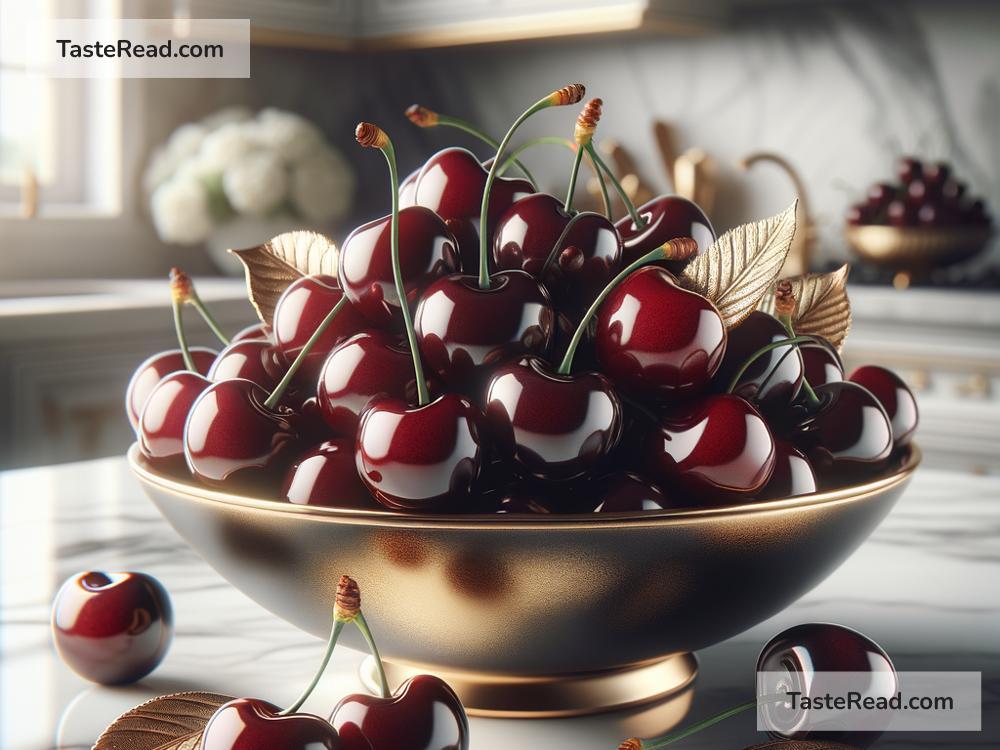Why Cherries Are Considered a Luxury Fruit
When you think of luxury fruits, cherries often come to mind. These small, vibrant fruits are loved around the world for their flavor, appearance, and versatility. But unlike bananas or apples, cherries are often viewed as a more special, premium choice. Why is that? What makes cherries a luxury fruit? Let’s dive into the reasons why these little gems earn their reputation as a treat for special occasions.
1. Limited Growing Season
One of the main reasons cherries are considered a luxury fruit is their short growing season. Unlike fruits like oranges or apples that are available year-round, cherries only make their appearance for a brief time during summer. Depending on the region, cherry season can last anywhere from four to eight weeks. This limited availability makes cherries feel more special and rare.
Because you can’t buy fresh cherries all year, people tend to savor them when they’re in season. Their short window of availability adds to their appeal and makes them feel like a treat.
2. Difficult Farming Conditions
Growing cherries is not as simple as planting a tree and waiting for fruit. Cherry trees are very delicate and require careful attention from farmers. They’re highly sensitive to weather conditions like frost, rain, and extreme temperatures. Heavy rain, for example, can cause cherries to split or rot, while frost can destroy crops before they even start to grow.
Additionally, cherries need specific soil and climate conditions to thrive. They grow best in regions with mild summers and cold winters, which limits the number of places they can be grown. Popular cherry-growing countries include the United States, Turkey, Chile, and Spain, but even in these regions, growing cherries is often a challenging task.
Since producing cherries requires extra care and attention, their cost is often higher compared to other fruits, adding to their luxury status.
3. Labor-Intensive Harvesting
Cherries are one of the most labor-intensive fruits to harvest. Unlike apples or pears that can be picked with machines, cherries are delicate and must be picked by hand. This means farmers and workers spend long hours carefully removing cherries from trees to ensure they don’t bruise or get damaged.
On top of that, cherries must be harvested quickly once they ripen because they do not last long on the tree. Timing is everything when it comes to picking cherries. This combination of careful handling and speedy harvesting increases the cost of production, making cherries more expensive and luxurious.
4. Fragile Shelf Life
Another factor that contributes to the luxury status of cherries is their fragility after harvest. Once cherries are picked, they don’t last very long—usually just a few days if kept fresh. This is unlike fruits like bananas that can survive transportation over long distances and stay ripe for weeks.
Because cherries have such a short shelf life, farmers and distributors must use special methods to transport them quickly and keep them fresh. This might involve refrigeration or air transport, which adds to the cost. Additionally, if cherries aren’t sold quickly in supermarkets, they can go to waste, making the supply chain costly for sellers.
5. High Demand Worldwide
Despite their delicate nature and high cost, cherries are in high demand across the globe. Their sweet, juicy flavor, bright color, and versatility make them popular in desserts, drinks, and snacks. From cherry pies to cherry cocktails, this fruit is often associated with indulgence.
The high demand for cherries also leads to higher prices, as consumers are willing to pay more for the seasonal treat. This is especially true for imported cherries, which come with added transportation costs. For example, cherries grown in the United States might be sold in Asia or Europe at premium prices because they’re viewed as rare and exotic.
6. Symbol of Elegance
Over the years, cherries have developed a reputation as a symbol of elegance and sophistication. In many cultures, cherries are associated with beauty, love, and indulgence. They’re often featured in gourmet recipes, luxury desserts, and even high-end fashion or art (like cherry prints and jewelry).
This cultural significance adds to their luxury status. Seeing cherries in a crystal bowl or added to a champagne cocktail creates the feeling that they’re something special—a fruit reserved for celebrations and indulgence.
Conclusion
Cherries are more than just a fruit; they’re an experience. Their limited growing season, challenging farming conditions, labor-intensive harvesting, and short shelf life all contribute to their higher cost and luxury reputation. Add to that their worldwide demand and symbolic elegance, and you have a fruit that stands out from the rest.
While they might be pricey and fleeting, cherries remind us to enjoy life’s little pleasures. Their juicy sweetness feels like summer wrapped in a bite—something you can savor and celebrate. The next time you eat cherries, take a moment to appreciate why they’re so special. After all, luxury isn’t just about cost—it’s also about rarity, effort, and beauty, and cherries have all three.


